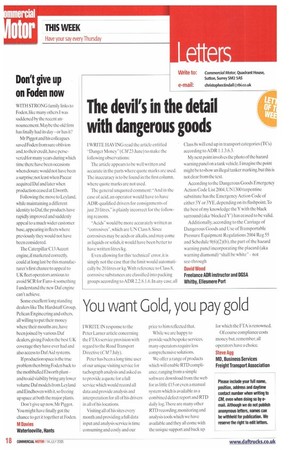The devil's in the detail with dangerous goods
Page 18

If you've noticed an error in this article please click here to report it so we can fix it.
I WRITE HAVING read the article entitled -Danger Money" (CM 23 June) to make the following observations: The article appears to be well written and accurate in the parts where quote marks are used. 'Hie inaccuracy is to be found in the first column, where quote marks are not used.
The general unquoted comment:"And in the case of acid, an operator would have to have ADR-qualified drivers for consignments of just 20 litres.is plainly incorrect for the following reasons.
"Acids" would be more accurately written as "corrosives", which are UN Class 8. Since corrosives may be acids or alkalis, and may come as liquids or solids, it would have been better to have written litres/kg.
Even allowing for this 'technical' error, it is simply not the case that the limit would automatically be 20 litres or kg. With reference to Class 8, corrosive substances are classified into packing groups according to ADR 2.2.8.1.6. In any case, all Class 8s will end up in transport categories (TCs) according to A DR 1.1.3.6.3.
My next point involves the photo of the hazard warning panel on a tank vehicle. I imagine the point might be to show an illegal tanker marking,but this is not clear from the text.
According to the Dangerous Goods Emergency Action Code List 2004, UN1300 turpentine substitute has the Emergency Action Code of either 3Y or 3YE, depending on its flashpoint.To the best of my knowledge the Y with the black surround (aka 'blocked Y') has ceased to be valid.
Additionally, according to the Carriage of Dangerous Goods and Use of Transportable Pressure Equipment Regulations 2004 Reg 55 and Schedule 9(6)(2)(b), the part of the hazard warning panel incorporating the placard (aka warning diamond) "shall be white" not see-through David Wood Freelance ADR instructor and DGSA Whitby, Ellesmere Port










































































































































































































